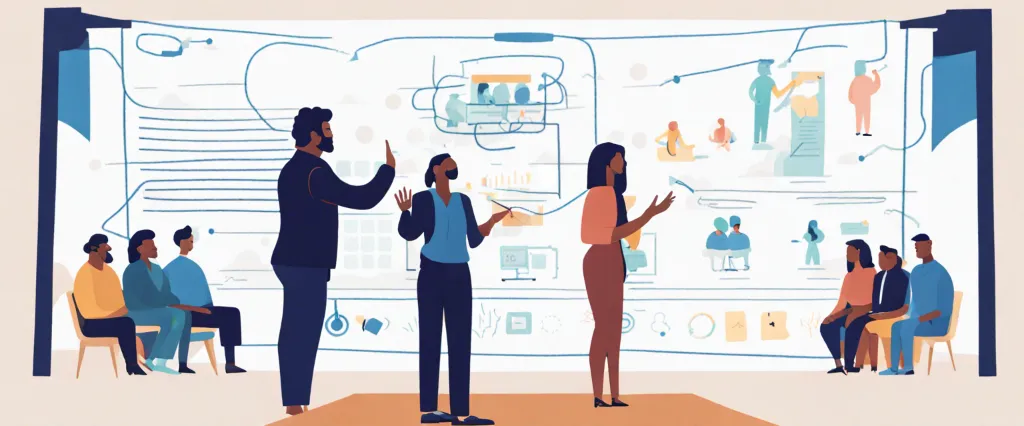——How to Develop SelfConfidence And Influence People By Public Speaking by Dale Carnegie & Shortest Way Home by Pete Buttigieg

In today’s dynamic and interconnected world, the ability to communicate persuasively and authentically is an invaluable skill. Whether it is inspiring a crowd from a podium or engaging in intimate conversations, effective communication has the power to shape our personal and professional lives. Two captivating books, “How to Develop Self-Confidence And Influence People By Public Speaking” by Dale Carnegie and “Shortest Way Home” by Pete Buttigieg, delve into the realms of public speaking and interpersonal communication, offering valuable insights and strategies to master the art of influence.
Dale Carnegie’s classic work, initially published in 1926, has remained a cornerstone in the field of self-improvement for nearly a century. Focused on the transformative potential of public speaking, Carnegie’s book lays out a roadmap to build confidence and develop compelling communication skills. With practical techniques and real-life examples, Carnegie provides readers with effective tools to captivate an audience, overcome stage fright, and leave a lasting impact through persuasive speeches.
On the other hand, “Shortest Way Home” paints an intimate portrait of Pete Buttigieg, former mayor of South Bend, Indiana, encapsulating his journey of self-discovery and mastery of communication as a means of effective governance. Buttigieg’s deeply personal memoir seamlessly weaves together the narratives of his experiences as both a politician and a citizen, exploring the intricate relationship between effective communication and public service. Through his personal anecdotes and reflections, Buttigieg imparts wisdom and strategies for fostering genuine connections, resolving conflicts, and bringing communities together through meaningful dialogue.
While Carnegie’s book primarily focuses on the art of public speaking, Buttigieg’s memoir delves into the nuances of interpersonal communication and its impact on governance. By juxtaposing these two works, we aim to uncover the common threads and distinct approaches to effective communication that lie at the intersection of public speaking and interpersonal dynamics. By comparing the timeless lessons offered by Carnegie’s guidebook with Buttigieg’s contemporary insights, we gain a holistic understanding of how communication can be utilized to influence others and shape our collective future.
Through our comparative analysis, we will explore various themes, such as building self-confidence, engaging an audience, utilizing rhetoric effectively, and harnessing communication as a tool for change. By examining the successes and failures presented in both books, we will investigate the underlying principles governing successful communication in different contexts. Ultimately, our aim is to provide readers with a comprehensive exploration of self-development and influence through public speaking, complemented by the lessons learned from Buttigieg’s journey in government and leadership.
In the pages that follow, we will embark on an enlightening exploration that bridges the realms of public speaking and governance, delving into the strategies, techniques, and insights presented by two esteemed authors. By navigating through the rich tapestry of Carnegie’s foundational work and Buttigieg’s experiential memoir, our comparative study promises to equip readers with a deeper understanding of the transformative power of effective communication in both the personal and political arenas.
Brief Summary of Two Books
How to Develop SelfConfidence And Influence People By Public Speaking by Dale Carnegie
“How to Develop Self-Confidence And Influence People By Public Speaking” by Dale Carnegie is a comprehensive guide that aims to help individuals build self-confidence and sharpen their public speaking skills. Carnegie shares practical techniques and insightful advice on how to overcome fear and anxiety associated with being in front of an audience, allowing readers to become more confident, persuasive, and influential speakers.
The book begins by highlighting the importance of self-confidence and its impact on personal and professional success. Carnegie emphasizes that confidence can be cultivated and provides strategies to develop it, such as maintaining a positive mental attitude, setting achievable goals, and continuously learning from mistakes.
Next, Carnegie delves into the art of public speaking, explaining techniques to engage and captivate an audience. He encourages readers to thoroughly prepare their speeches, allowing them to communicate their ideas effectively and assertively. The author also emphasizes the significance of connecting with the audience on an emotional level, sharing personal anecdotes and stories to establish rapport and credibility.
Carnegie also provides valuable insights on how to handle stage fright and nervousness. He suggests practical exercises and mental conditioning techniques to control anxiety and build a sense of calmness while speaking in public. By following these suggestions, readers can gain confidence and present themselves with poise and assurance.
Furthermore, the book includes examples from successful speakers and leaders, providing a wealth of inspiration and practical advice that readers can apply to their own public speaking endeavors.
In summary, “How to Develop Self-Confidence And Influence People By Public Speaking” equips readers with the tools and strategies needed to build self-confidence, enhance persuasive communication, and become influential public speakers. This book serves as a valuable resource for professional growth and personal development in various areas of life.
Shortest Way Home by Pete Buttigieg
“Shortest Way Home: One Mayor’s Challenge and a Model for America’s Future” is a memoir written by Pete Buttigieg, an American politician and the former mayor of South Bend, Indiana. The book chronicles Buttigieg’s journey from growing up in South Bend, to his service as mayor, and his run for the Democratic presidential nomination in 2020.
The memoir begins by exploring Buttigieg’s early life and the challenges he faced growing up in a Rust Belt city. It delves into his experiences studying at Harvard, his decision to leave a prestigious consulting job and return to South Bend, and the impact he made as the youngest mayor of a U.S. city at age 29.
Buttigieg offers a close examination of his time as mayor, describing the ambitious programs and policies he implemented to revitalize South Bend. He discusses the economic and social challenges he faced, as well as the progress made in areas such as infrastructure, public safety, and job creation. He also reflects on his personal experiences and how they informed his approach to governance.
As Buttigieg’s political career gains momentum, he delves into his decision to run for president, the challenges of the campaign trail, and his ideas for the future of America. He explores key issues such as climate change, healthcare, inequality, and democratic reform.
Beyond his own personal journey, Buttigieg offers a broader vision for the country, emphasizing the importance of community, inclusion, and a new era of political leadership. Through personal anecdotes and reflections, he presents a model for local politics and civic engagement that can bring about positive change for America as a whole.
“Shortest Way Home” serves as both an autobiography and a call to action, urging readers to embrace a new style of politics and take an active role in shaping the future of their communities.
Comparison between Two Books

Similarities in Public Speaking
While “How to Develop Self-Confidence and Influence People by Public Speaking” by Dale Carnegie and “Shortest Way Home” by Pete Buttigieg may seem unrelated at first glance, there are indeed similarities in their approach to public speaking. Both books emphasize the importance of public speaking as a tool for self-confidence, influence, and leadership.
1. Overcoming fear and anxiety: Both books acknowledge the common fear of public speaking and provide strategies to overcome this fear. They offer practical advice on how to manage anxiety, nervousness, and stage fright.
2. Preparation and practice: Both authors emphasize the significance of thorough preparation and practice. They stress the importance of researching the topic, organizing thoughts coherently, and practicing delivery to appear proficient and credible to the audience.
3. Authenticity and sincerity: Both Carnegie and Buttigieg emphasize the need to be authentic and sincere when speaking to the public. They argue that being genuine and showing genuine interest in the audience’s needs and concerns helps to build trust and connection.
4. Engaging the audience: Both books stress the importance of engaging the audience through storytelling, humor, and relatable anecdotes. They advise speakers to make their content relatable and interesting, ensuring that the audience remains attentive and connected throughout the speech.
5. Impactful delivery: Both books emphasize the significance of effective delivery techniques such as vocal variety, body language, and eye contact. They highlight the importance of using these tools to convey confidence, credibility, and passion for the subject matter.
6. Adaptation to different contexts: Both authors recognize the need for adaptability when speaking to different audiences or in various settings. Whether it’s tailoring the language, examples, or delivery style, both books underscore the importance of modifying one’s approach to suit the specific context and group of listeners.
In summary, both “How to Develop Self-Confidence and Influence People by Public Speaking” by Dale Carnegie and “Shortest Way Home” by Pete Buttigieg share common ground in their advice on public speaking. They emphasize overcoming fear, thorough preparation, authenticity, engaging the audience, impactful delivery, and adaptability. These shared principles can help individuals improve their public speaking skills and enhance their ability to influence and inspire others.
Divergences in Public Speaking
“How to Develop Self-Confidence And Influence People By Public Speaking” by Dale Carnegie and “Shortest Way Home” by Pete Buttigieg are two very different books with distinct focuses. While Carnegie’s book aims to provide guidance on developing self-confidence and influencing others through public speaking, Buttigieg’s book focuses on his personal journey and political experiences as the former mayor of South Bend, Indiana.
The divergence between these books in regards to public speaking lies in their approach and purpose. Carnegie’s book, as the title suggests, is primarily a self-help guide aimed at helping readers become more confident and effective public speakers. It provides practical techniques, tips, and strategies for overcoming fear, boosting self-esteem, and captivating an audience. Carnegie draws from his own experiences and shares numerous anecdotes to emphasize the importance of public speaking in various aspects of personal and professional life.
On the other hand, Buttigieg’s book, “Shortest Way Home,” does not primarily focus on public speaking itself, but rather includes public speaking as a component of his discussion about his political career and journey. While he does touch upon the significance of public speaking in his role as a politician and the impact it has had on his ability to connect with constituents, his book extends beyond this topic. Buttigieg explores his personal background, the challenges he faced during his campaign and time in office, and his vision for the future.
In terms of divergence in their approach to public speaking, Carnegie offers readers a step-by-step guide with practical advice, exercises, and examples to improve their skills in this area. His book is structured around outlining fundamental principles and techniques, and it provides clear instructions and suggestions on how to apply them effectively. Buttigieg’s book, in contrast, is more of a memoir and personal reflection. While he may touch upon his experiences as a public speaker, his main focus is not on teaching the reader how to become a more skilled communicator.
Therefore, the divergence in the treatment of public speaking in these books is evident. Carnegie’s book provides a comprehensive guide with the primary objective of developing self-confidence and influencing others through public speaking, while Buttigieg’s book incorporates public speaking as a part of his personal narrative and political journey, without primarily focusing on it as a skill to be honed.

Conclusion
This is a subjective question, as the worthiness of a book ultimately depends on your personal interests and goals. Both books offer valuable insights in different areas.
– “How to Develop Self-Confidence And Influence People by Public Speaking” by Dale Carnegie is a classic self-help book that focuses on improving public speaking skills and building self-confidence. If you’re looking to enhance your communication skills or overcome the fear of public speaking, this book can provide practical advice and strategies.
– “Shortest Way Home” by Pete Buttigieg offers a memoir and highlights the experiences and perspectives of the author as he navigates his career in politics. If you are interested in politics, leadership, or want to gain insights into the experiences of a rising American politician, this book may be more suitable for you.
Consider your personal interests, goals, and what you hope to gain from reading a book to make the best decision for yourself.


